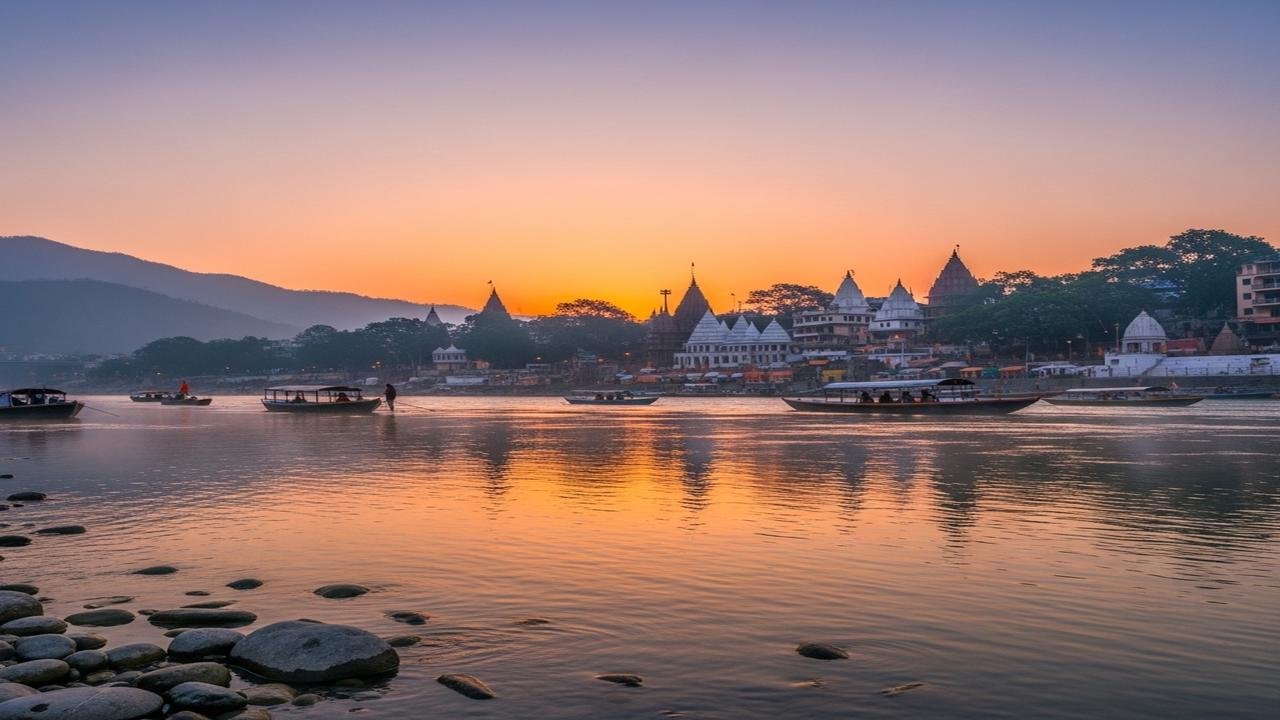Rivers in India: Sacred Lifelines From Rigveda to Kumbh

Rivers as living beings and lifelines
In India, rivers are more than watercourses. They are described in texts and lived traditions as mothers, goddesses, ancestors and gods. This is rooted in their obvious practical role — supplying water for drinking, irrigation and trade — and in a longer cultural imagination that links flowing water to life, fertility and social order. Calling a river sacred signals both reverence and dependence: the river feeds rice fields, carries boats, marks routes and hosts village shrines.
Scriptural and mythic roots
Vedic hymns already praise rivers by name. The Rigveda addresses the Sindhu (Indus), Sarasvati and other rivers with hymns that treat them as powerful, divine forces. Later texts — the Mahābhārata and many Purāṇas — elaborate stories that personify rivers. One famous example is the tale of Bhāgīratha: his penance brings the Ganga from heaven to earth, and Shiva captures her fall in his hair so her force will not destroy the land. That story appears in many Puranic layers and in the Mahābhārata, and it shapes how pilgrimage, descent (called avatāra or descent narratives) and ghats (river steps) are imagined.
How different traditions read rivers
- Vedic and Brāhmaṇical: Rivers are ritually important in Vedic rites and are invoked in sacrificial formulas and life-cycle ceremonies.
- Śaiva: Ganga’s connection to Śiva is central — she is both his tress and a cleanser of sins in many devotional accounts.
- Vaiṣṇava: The Yamuna is closely linked to Kṛṣṇa; many Vaishnava pilgrims honour the Yamuna’s association with his pastimes.
- Śākta: In some regions rivers are seen as manifestations of the Goddess (Devi) and worshipped in local forms and river-festivals.
- Local and folk traditions: Each river often has unique local myths, ritual specialists and taboos that coexist with pan-Indian texts.
Ritual practices along rivers
Living traditions include many visible practices on riverbanks:
- Snāna — bathing: ritual immersion that symbolizes purification before worship or pilgrimage. (Note: cold or fasted bathing can be physically risky; take precautions.)
- Offerings and aarti: lamps, flowers and food may be offered at dawn or dusk to honour the river.
- Śrāddha — ancestor rites: many Hindus perform offerings for ancestors on riverbanks, believing the proximity to sacred water aids the departed.
- Pilgrimage: cities like Varanasi, Haridwar, Prayagraj and Rishikesh attract pilgrims for tirtha (crossings or holy stops) and large gatherings such as the Kumbh Mela, which is timed by astronomical tithis (lunar days) and ritual calendars.
Symbolism and philosophical meanings
Scholars and commentators have long used river imagery in philosophical teaching. Rivers symbolize continuity amid change, the flow of time, the passage from samsāra (the cycle of rebirth) toward moksha (liberation), and the idea that the divine pervades the world. In devotional literature a river can be both the means of purification and a beloved presence — an intimate deity rather than a distant God.
Social and political dimensions
Rivers shape identity and politics. Control of river water has economic and political consequences, so rivers become sites for state planning, regional claims and environmental campaigns. Colonial mapping and modern engineering changed many river practices, while post‑independence projects for irrigation, dams and pollution control have complicated ritual access and ecological health. At the same time, public faith in rivers often motivates conservation movements and local stewardship.
Festivals and calendar rhythms
River-centered festivals mark seasonal cycles and mythic events. Examples include:
- Kumbh gatherings, which are ritual bathing festivals timed by combinations of sun, moon and Jupiter positions (celebrated on specific tithis in astronomical tradition).
- Ganga Dussehra, when devotees mark the descent of the Ganga (usually observed in late spring to early summer in many places).
- Local harvest and thanksgiving rites that tie river flow to agricultural calendars.
Why worship persists today
Worship of rivers continues because it operates on several levels at once:
- Material dependence: people still need water for daily life and agriculture, so ritual remembers that dependence and asks for bounty.
- Relational imagination: personifying a river as mother or goddess creates an ethical bond; rituals teach respect and restraint toward a life-giving force.
- Cultural memory: myths, songs, temples and ghats embed rivers in family and regional histories, so devotion becomes a way of inheriting identity.
- Public spirituality: large collective events and everyday acts at the ghats sustain social ties and shared calendars.
Contested meanings and contemporary questions
Not all reverence protects rivers. Ritual use sometimes coexists with pollution, while development projects alter flow and access. Debates about legal status — for instance, when courts and activists speak of rivers as entities with rights — reflect newer attempts to align sacred value with ecological protection. Scholars caution against assuming a single “religious” attitude toward rivers: views differ by text, region, caste, class and gender, and by whether practices are urban, rural, elite or folk.
Concluding reflection
To worship a river in India is to combine the practical, the poetic and the religious. It is to recognise water’s material power while also placing it in a moral and mythic world where rivers teach, nourish and carry memory. That layered relationship helps explain why rivers remain central in temples, songs and public life, even as modern pressures force new conversations about their care.
